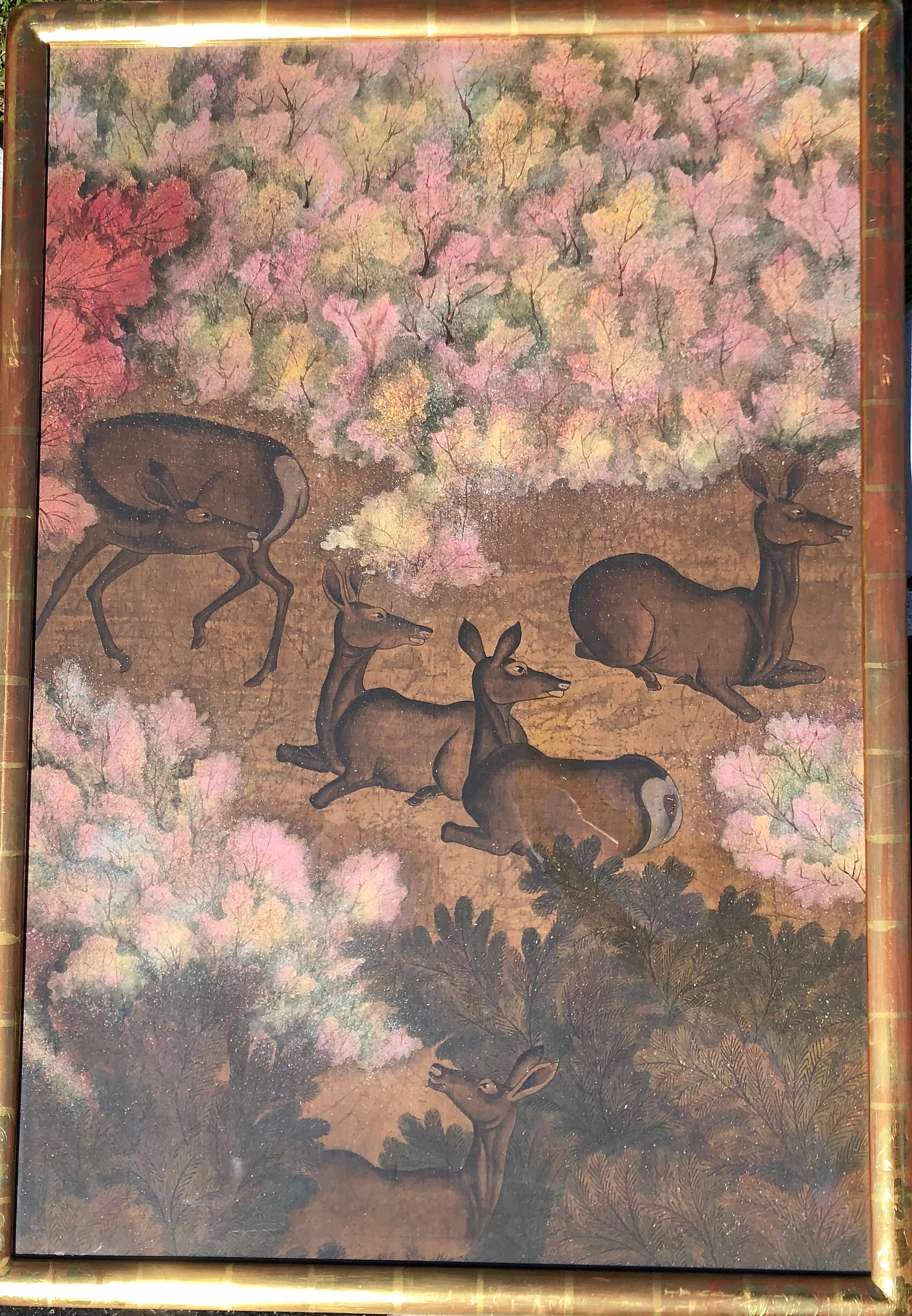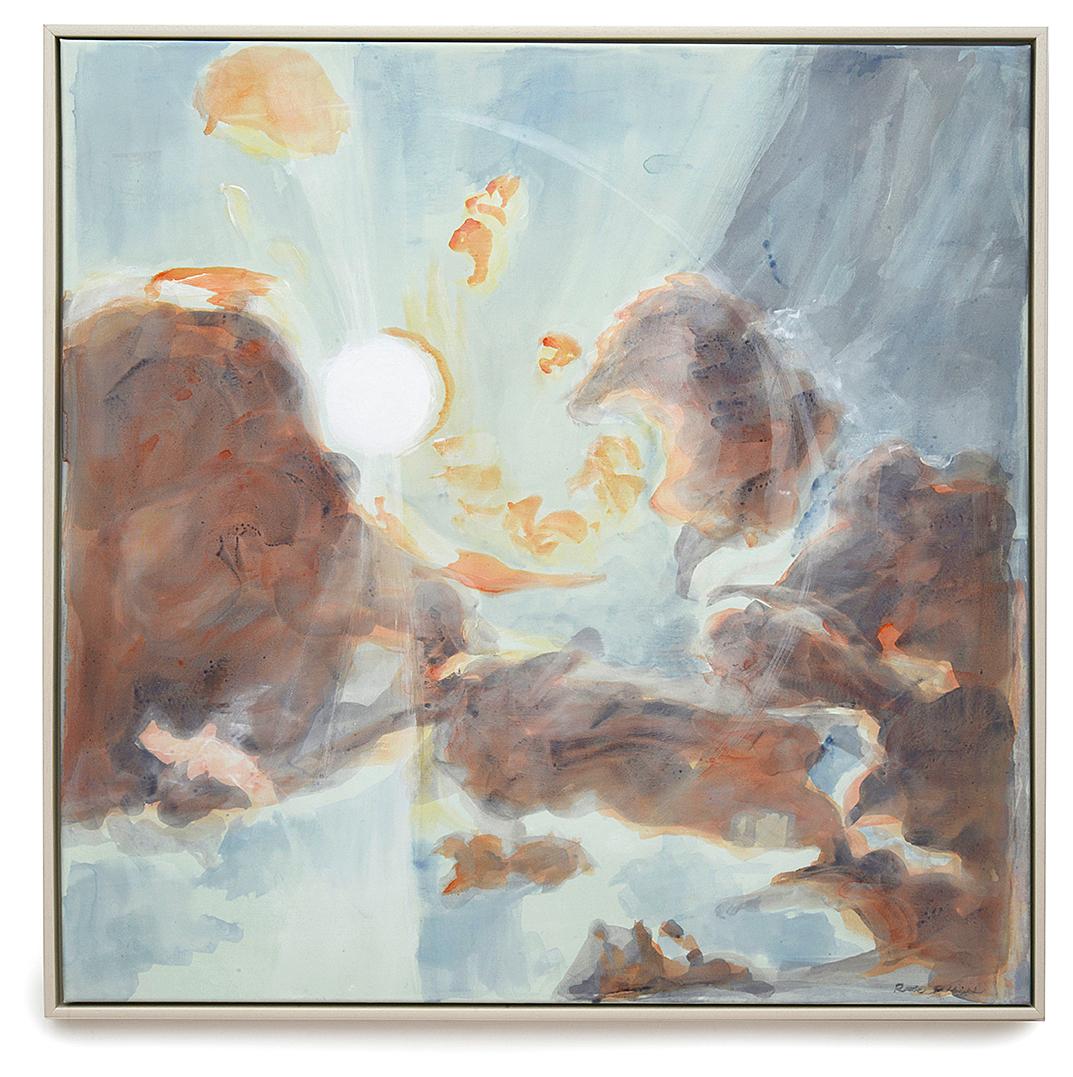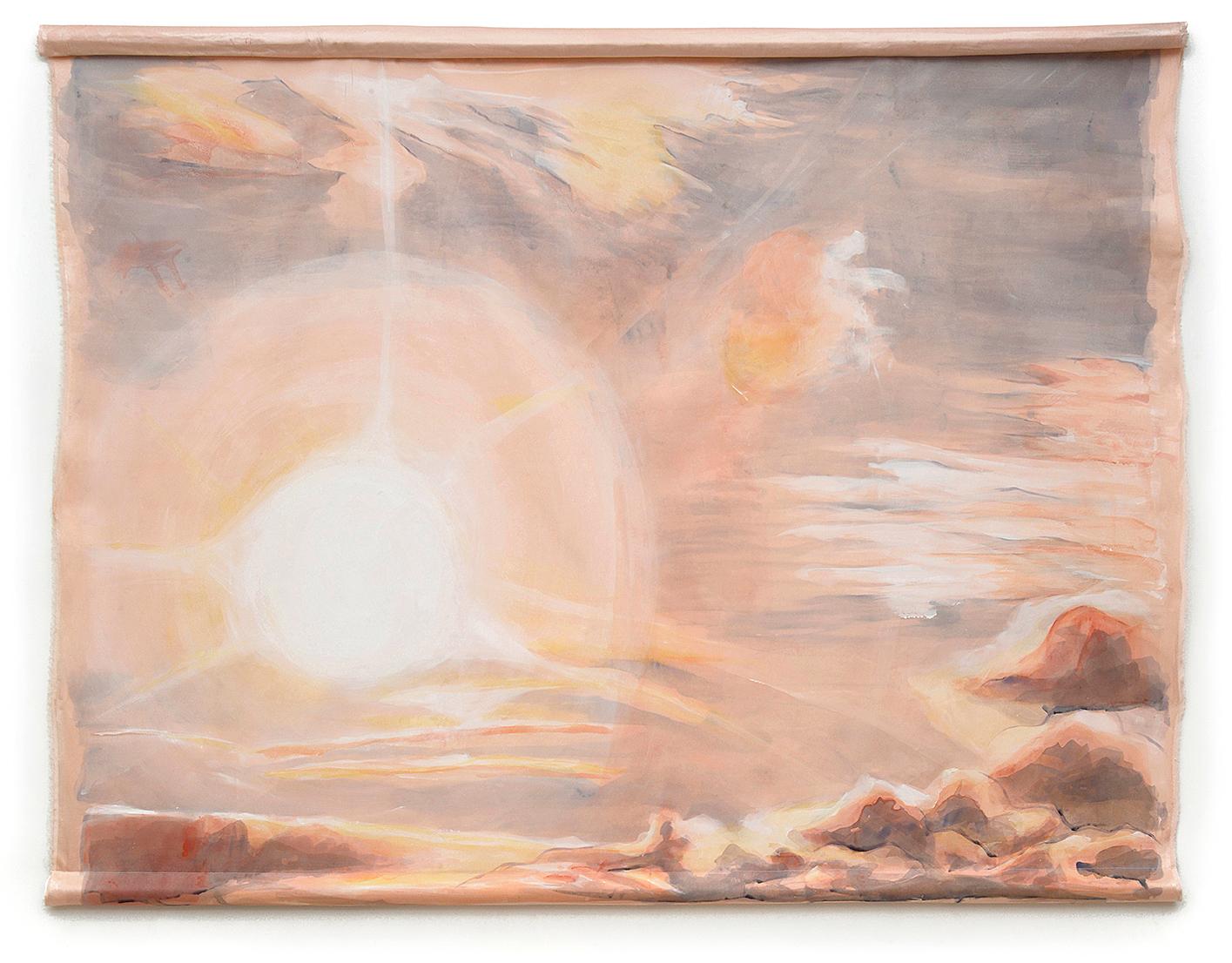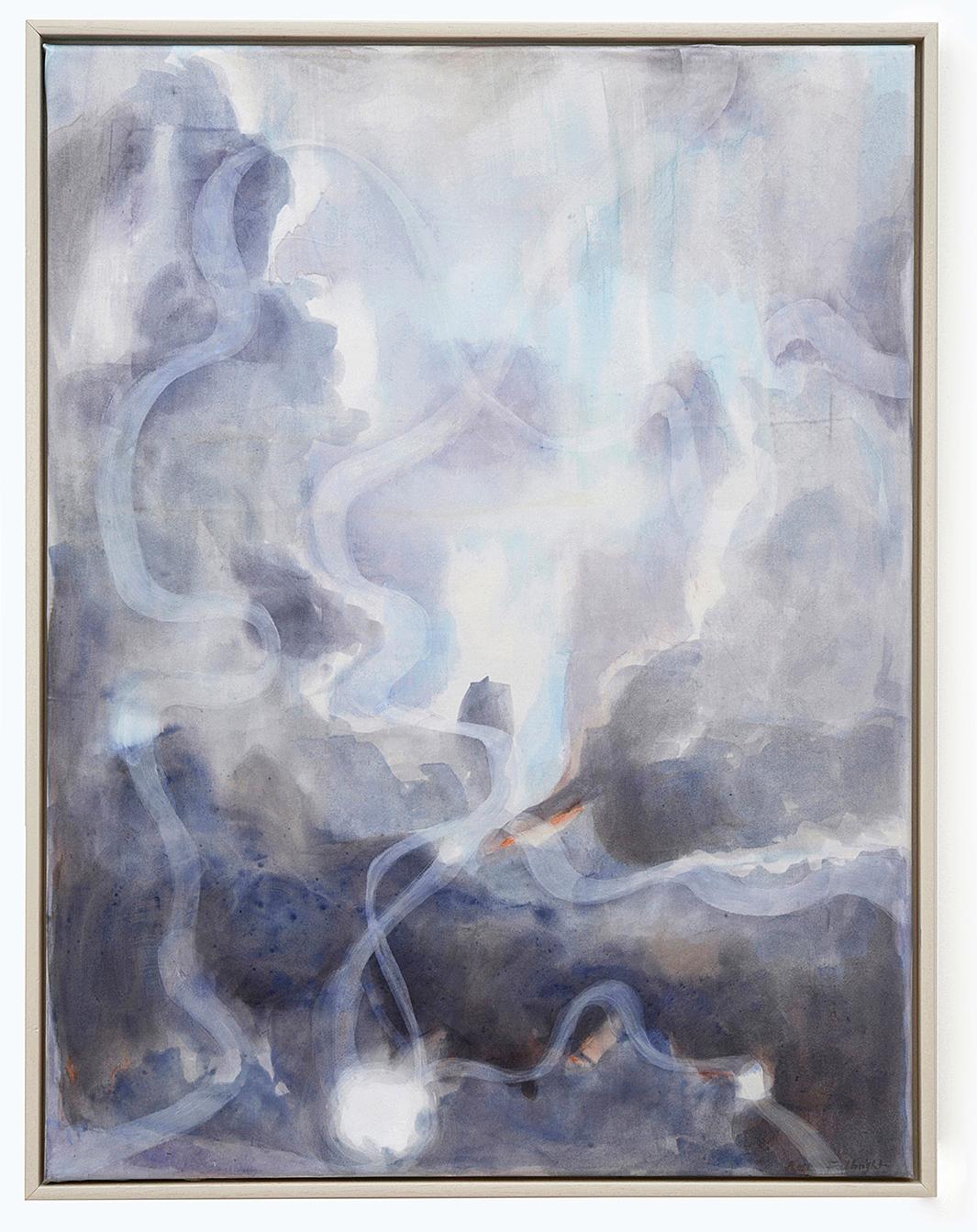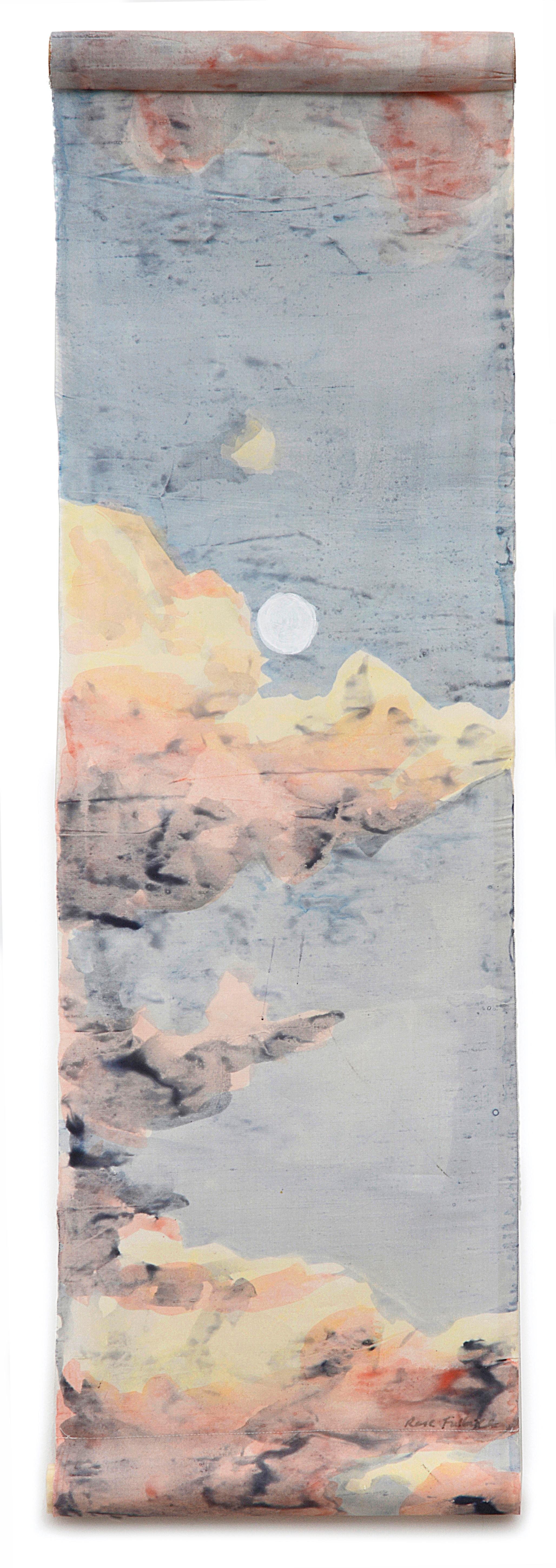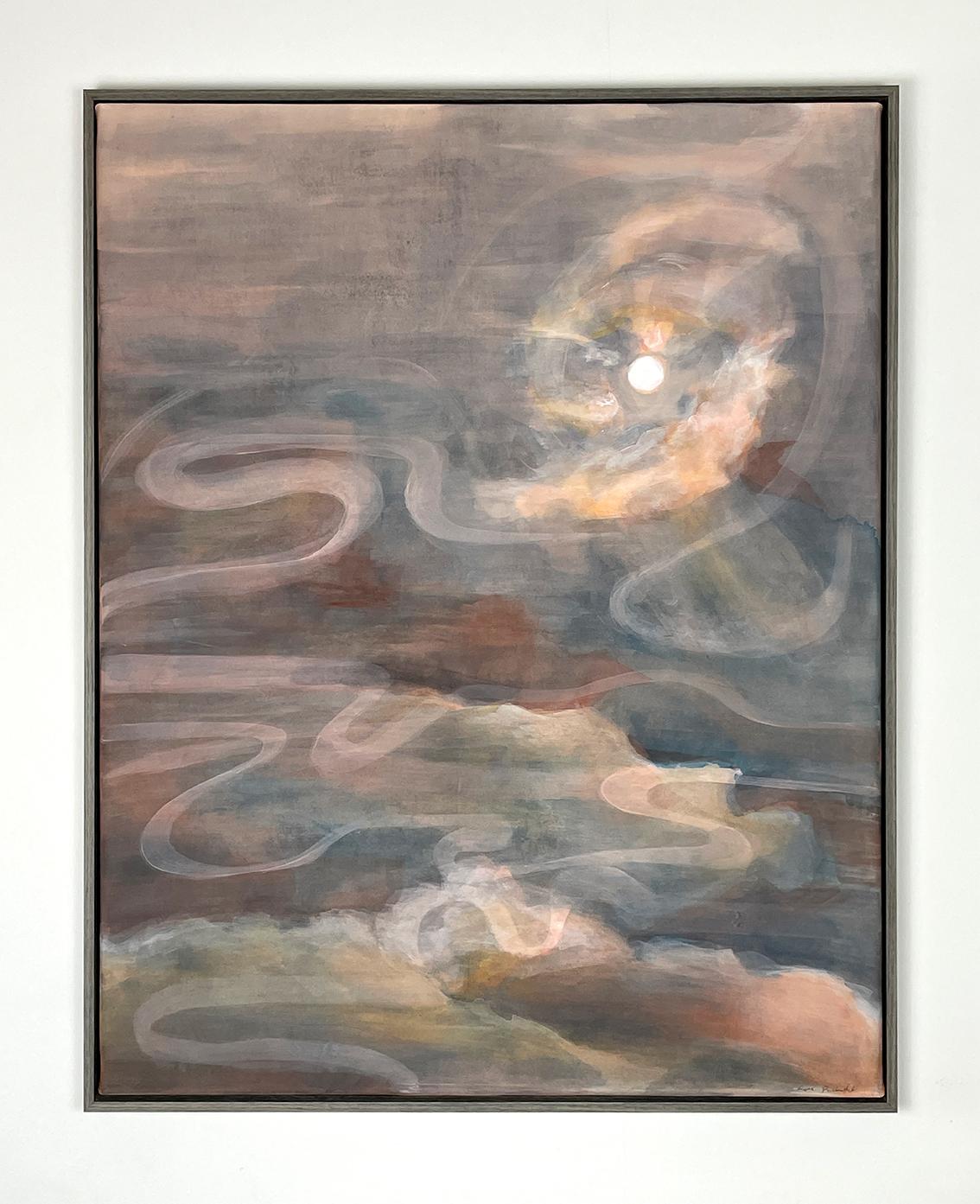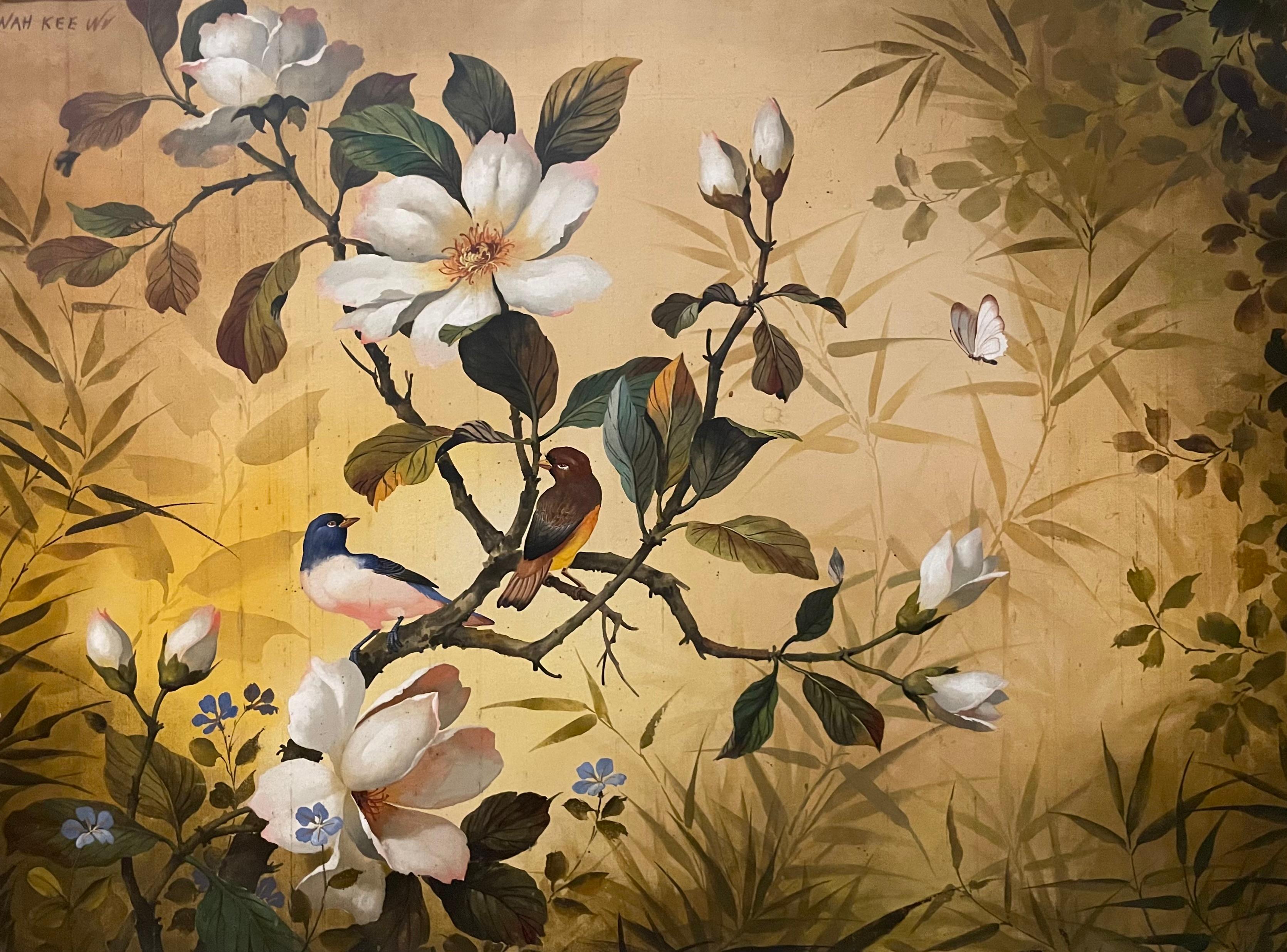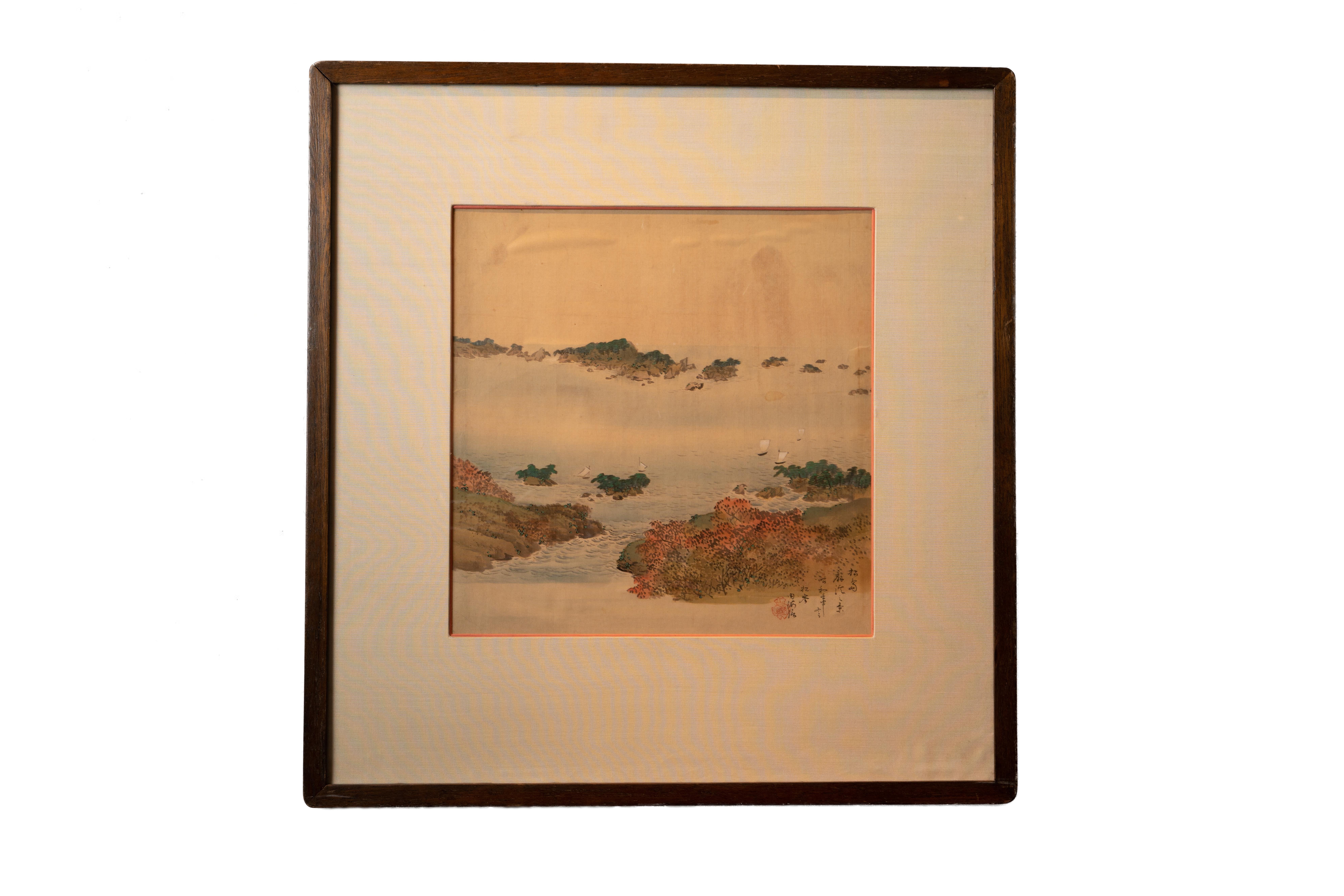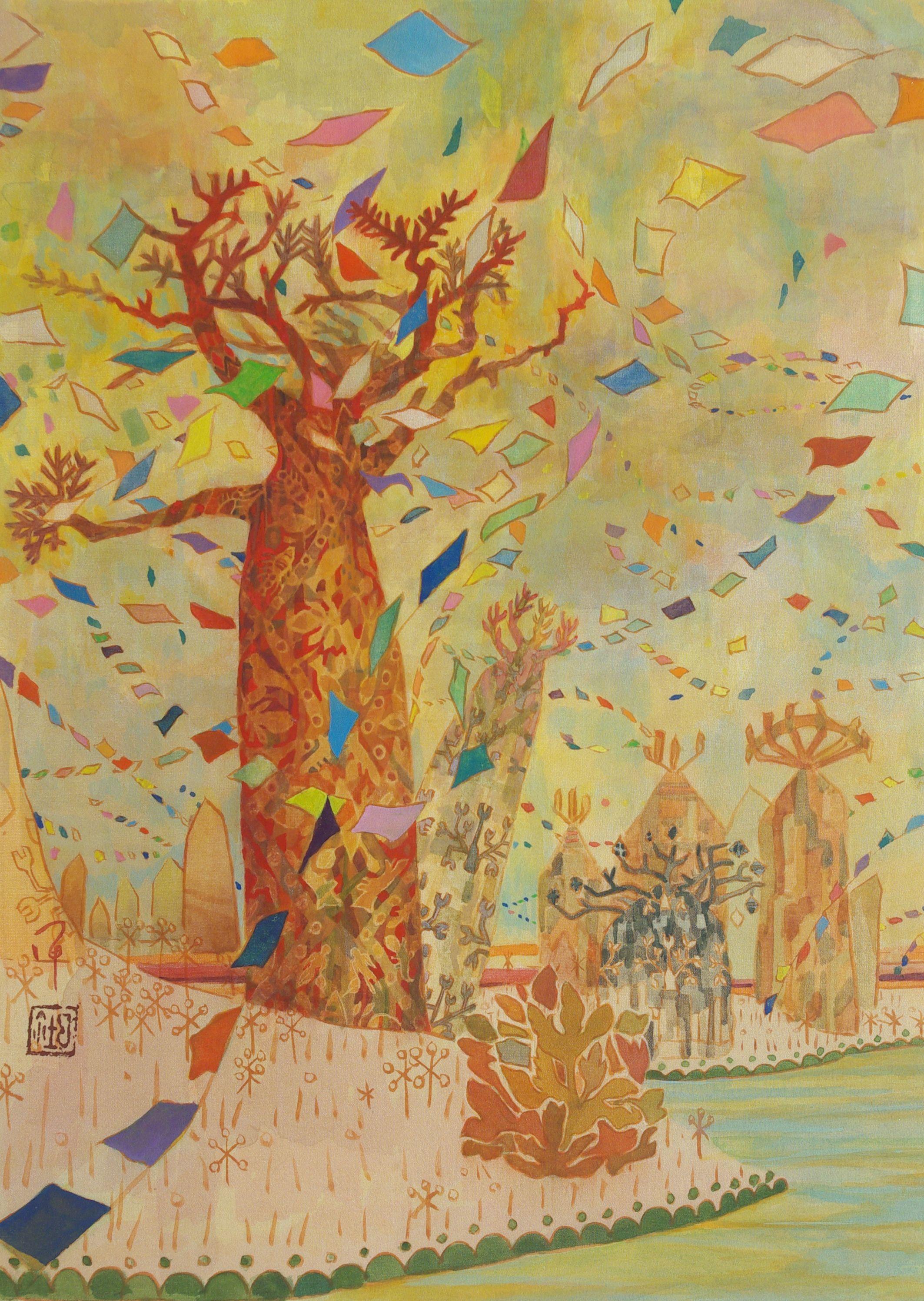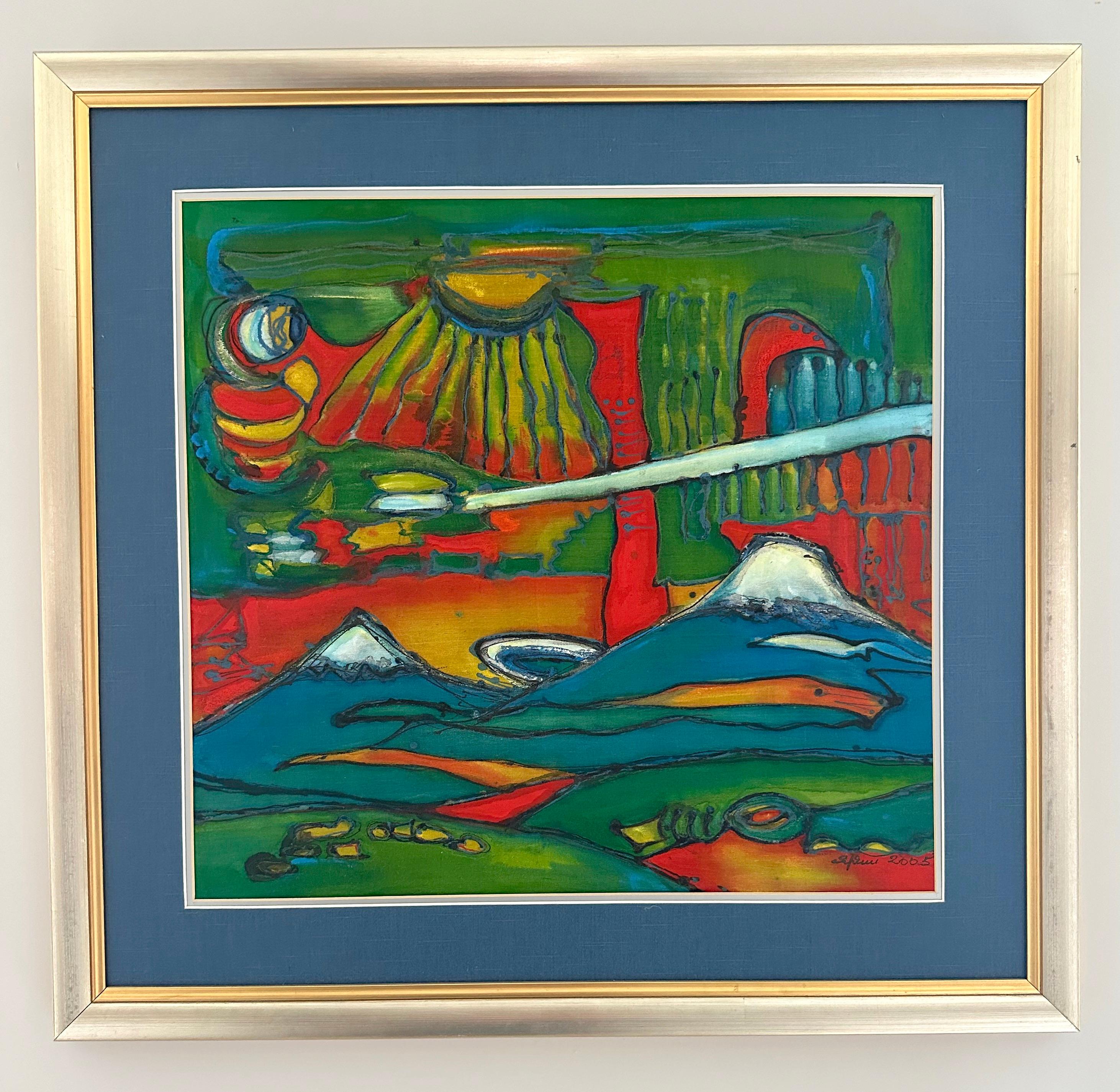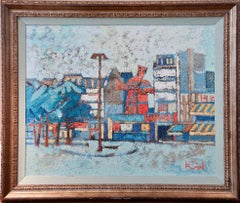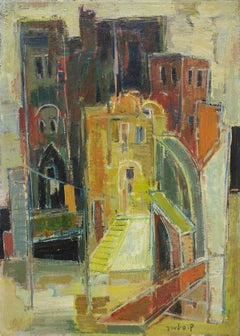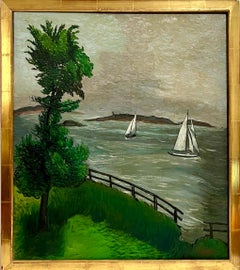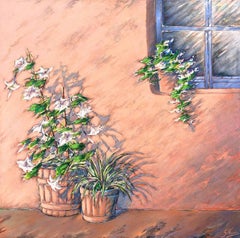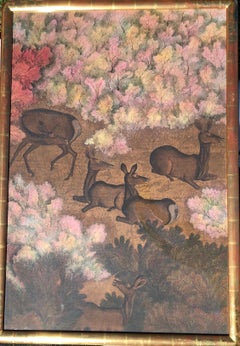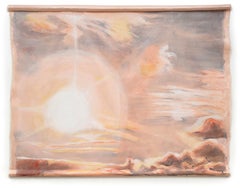
Early Israeli Batik on Silk Painting Jerusalem Landscape with Figure Bezalel
View Similar Items
Want more images or videos?
Request additional images or videos from the seller
1 of 5
Miriam HadgadyaEarly Israeli Batik on Silk Painting Jerusalem Landscape with Figure Bezalel
Price:$1,100
$1,800List Price
About the Item
- Creator:Miriam Hadgadya (1895 - 1982, Israeli)
- Dimensions:Height: 19 in (48.26 cm)Width: 15 in (38.1 cm)
- Medium:
- Movement & Style:
- Period:
- Condition:Condition consistent with age and history. Some minor discoloration. needs new frame and mat.
- Gallery Location:Surfside, FL
- Reference Number:1stDibs: LU38211980012
About the Seller
4.9
Platinum Seller
Premium sellers with a 4.7+ rating and 24-hour response times
Established in 1995
1stDibs seller since 2014
1,791 sales on 1stDibs
Authenticity Guarantee
In the unlikely event there’s an issue with an item’s authenticity, contact us within 1 year for a full refund. DetailsMoney-Back Guarantee
If your item is not as described, is damaged in transit, or does not arrive, contact us within 7 days for a full refund. Details24-Hour Cancellation
You have a 24-hour grace period in which to reconsider your purchase, with no questions asked.Vetted Professional Sellers
Our world-class sellers must adhere to strict standards for service and quality, maintaining the integrity of our listings.Price-Match Guarantee
If you find that a seller listed the same item for a lower price elsewhere, we’ll match it.Trusted Global Delivery
Our best-in-class carrier network provides specialized shipping options worldwide, including custom delivery.More From This Seller
View AllLarge Polish French Paris Scene Mid Century Modernist Oil Painting Moulin Rouge
By Abram Krol
Located in Surfside, FL
Wonderful scene of the Moulin Rouge cabaret nightclub at Place Pigalle in Paris. Painted in wonderful moody blue and red colors.
Size includes frame.
Abram Abraham Krol was born Jan...
Category
1950s Modern Landscape Paintings
Materials
Canvas, Oil
Rome (Milan) Italian Cityscape by Noted Hungarian Israeli Artist
By Claire Szilard
Located in Surfside, FL
Colorful Italian cityscape which includes elements of both Rome and Milan, noted on the back of the painting. Signed in hebrew.
Claire Szilard, a native of Hungary, is an Israeli painter and sculptor, but for the past 10 years she has again been living in Hungary. A short time after she married Pal Fusti in 1944, her sweetheart was conscripted into the work brigade, which engaged mostly in clearing mines. Like many others, Fusti never returned from the war and was declared missing.
After she gave up all hope that her husband would return, Szilard immigrated first to Switzerland and several years later, came to Israel. She lived in the artists' village of Ein Hod and later spent many years in the artists' quarter in Old Jaffa. She quickly carved out a respected place for herself among Israeli artists. She was a pioneer in the art of working in glass (vitrage). Over the years, her glasswork has decorated 14 synagogues and a number of public buildings throughout Israel. Her paintings and sculptures have been exhibited in Switzerland, Paris, Rome and London. In 1985, she was chosen painter of the year in Brazil.
Szilard lived in Israel for nearly 40 years, during which time she established a studio for herself in Paris as well, married and was widowed. After the change of regime in Hungary in 1990, she showed her works for the first time in Budapest, in the prestigious Vigado Gallery.
That particular exhibition had unexpected results. When she was in Budapest she learned by chance that her first husband had not been killed in the war, but had fallen prisoner and had returned to Hungary after a number of years. He looked for his young wife, but didn't find her. He too married and was widowed.
Forty years later, they met again. Their feelings for each other were renewed and they decided to join their lives - she at nearly 70, he at nearly 80. Pal Fusti did not feel himself in any condition to begin a new life in Israel, which was an unknown country for him, where he did not know the language and the customs. The couple thus remained in Hungary. Not too long ago, they celebrated in great style - all the "who's who" of the artistic world of the Hungarian capital was there - the 10th anniversary of their renewed meeting, her 80th birthday and his 90th.
Studies: Free Academy Budapest; School of Fine Arts, Geneva; Fresco in Ravena, Italy;
Prizes: 1969 Nordau Prize; 1984 Silver...
Category
20th Century Modern Landscape Paintings
Materials
Canvas, Oil
1930 Oil Painting Sea Side Sailboats American Modernist WPA Artist Morris Kantor
By Morris Kantor
Located in Surfside, FL
Morris Kantor, American, 1896-1974
Seaside View, 1930
Hand signed M. Kantor and dated 1930 lower right
Oil on canvas
22 1/4 x 19 1/4 inches
24 1/2 x 21 (frame)
Morris Kantor (Belarusian: Морыс Кантор) (1896-1974) was a Russian Empire-born American painter based in the New York City area. This is a beautiful boat scene with a river or lake probably on Long Island.
Born in Minsk on April 15, 1896, Kantor was brought to the United States in 1906 at age 10, in order to join his father who had previously relocated to the states. He made his home in West Nyack, New York for much of his life, and died there in 1974. He produced a prolific and diverse body of work, much of it in the form of paintings, which is distinguished by its stylistic variety over his long career. Perhaps his most widely recognized work is the iconic painting "Baseball At Night", which depicts an early night baseball game played under artificial electric light. Although he is best known for his paintings executed in a realistic manner, over the course of his life he also spent time working in styles such as Cubism and Futurism, (influenced by the Art Deco movement) and produced a number of abstract or non-figural works. A famous cubist, Futurist, painting of his "Orchestra" brought over 500,000$ at Christie's auction house in 2018. Kantor found employment in the Garment District upon his arrival in New York City, and was not able to begin formal art studies until 1916, when he began courses at the now-defunct Independent School of Art. He studied landscape painting with Homer Boss (1882-1956). In 1928, after returning to New York City from a year in Paris, Kantor developed a style in which he combined Realism with Fantasy, often taking the streets of New York as his subject matter. He did some moody Surrealist Nude paintings and fantasy scenes. In the 1940's he turned towards figural studies. Later in his career, Kantor himself was an instructor at the Cooper Union and also at the Art Students League of New York in the 1940s, and taught many pupils who later became famous artists in their own right, such as Knox Martin, Robert Rauschenberg, Sigmund Abeles and Susan Weil...
Category
1930s American Modern Landscape Paintings
Materials
Canvas, Oil
Spoken Shadows, Large Scale Modernist Southwest Adobe Oil Painting Gustavo Novoa
By Gustavo Novoa
Located in Surfside, FL
Gustavo Novoa, Born 1941 in Santiago, Chile, He attended the Academy of Fine Arts. Novoa made his debut as an artist in the early 1960¹s selling oil paintings,watercolors and crayon drawings on the streets of Paris, principally Montmartre. His first one-man show was sponsored by the Chilean Ambassador at the Maison de L¹Amerique Latin in 1961. The late Queen Victoria Eugenia of Spain sponsored his second show in Lausanne, Switzerland in 1962. Showing in galleries in the Faubourg St. Honore and the Salon de la Jeune Peinture. Novoa constructed a dream-like Naive new jungle where the lion lies down with the zebra. Panthers and pandas share the shade with African monkeys and American raccoons.
Novoa became represented exclusively by the Wally Findlay Galleries in the early 1970s, and his one-man shows in New York, Paris, Palm Beach and Beverly Hills established him as a champion of ecology and wildlife preservation along with Henri Maik. His animals were primitive and painted in lush and colorful Folk Art backgrounds. Ringling Brothers, Barnum & Bailey commissioned him to do the poster and program for the circus that year. By 1971, Novoa¹s paintings had changed again. His show "The Grand Tour" sent his animals prowling the major cities of the world, from the Spanish Steps in Rome to the Left Bank in Paris, through the Great Pyramids and back to Park Avenue in New York. It was perhaps the most surrealistic of Novoa¹s shows. On April 3, 1988, Prince Charles of England set a new record for Novoa¹s sales by auctioning one of his paintings at a benefit sale in Palm Beach.Novoa was received at the White House by Mrs. George Bush. Miami¹s Art Deco District had chosen Novoa¹s painting "The Carlyle Hotel" to be presented to the First Lady.
The painting hangs in the President¹s Library. The prestigious Gallery 1-2-3 of El Salvador introduced Novoa at their Latin American Biennale exhibition in June of 1992. The Instituto Cultural de Santiago presented an impressive one-man show in August, 1992. His first exhibition in Chile, where the press named him "Painter of a Lost Paradise". Sponsored by Avensa Airlines of Venezuela, Novoa opened his first one-man show in Caracas, with great success, at the Galeria Oscar Ascanio in June of 1993. The Wally Findlay Galleries in New York presented his latest paintings...
Category
Late 20th Century Modern Landscape Paintings
Materials
Canvas, Acrylic
Sailing Ships
Located in Surfside, FL
Maritime Impressionist painting in somber night sky colors.
Category
Mid-20th Century Modern Landscape Paintings
Materials
Canvas, Oil
$650
Large Polish Israeli Landscape Mid Century Oil Painting
Located in Surfside, FL
Genre: Modern
Subject: Cityscape
Medium: Oil
Surface: Canvas
Country: Israel
Dimensions: 36 1/4" x 25 3/4" x 3/4"
Dimensions w/Frame: 44 3/4" x 34"
Rare Modern Mid Century Israel landscape...
Category
20th Century Modern Landscape Paintings
Materials
Canvas, Oil
You May Also Like
Reindeer In The Forest Chinese
Located in Lake Worth Beach, FL
Reindeer In Forest
Tempera on silk, gold leaf frame under glass, by Chinese artist Ma Hai Feng born 1958.
Category
1980s Modern Animal Paintings
Materials
Silk, Egg Tempera
Mantle of Darkness - Contemporary Expressionist Sky Scape Painted Wall Hanging
Located in London, GB
Mantle of Darkness
This is a unique painting in acrylic on textured silk shantung, made into a wall hanging by British contemporary artist Rose Fulbright.
The artwork is signed an...
Category
2010s Contemporary Landscape Paintings
Materials
Silk, Cotton Canvas, Cotton, Oil Pastel, Acrylic
The Sun, The Sky II - Contemporary Expressionist Sky Scape Painting on Silk 2024
Located in London, GB
The Sun, The Sky II is a unique contemporary expressionist painting of the sun shining through clouds in pastel coloured acrylic on mint green silk satin by British contemporary arti...
Category
2010s Contemporary Landscape Paintings
Materials
Cotton, Acrylic, Cotton Canvas, Oil Pastel, Silk
Resplendent Orb - Contemporary Expressionist Sky Scape Painted Silk Wall Hanging
Located in London, GB
Resplendent Orb
This is a unique textile hanging of a clouded sky with expressionistic sun and colours on pink silk satin by British contemporary artist Rose Fulbright...
Category
2010s Contemporary Landscape Paintings
Materials
Silk, Cotton Canvas, Cotton, Oil Pastel, Acrylic
Vitalis - Contemporary Expressionist Sky Scape Painting on Silk 2024
Located in London, GB
Vitalis
This is a unique modern expressionistic depiction of the sun through storm clouds in acrylic on silk satin painting by British contemporary artist Rose...
Category
2010s Contemporary Landscape Paintings
Materials
Acrylic, Cotton Canvas, Cotton, Oil Pastel, Silk
$977 Sale Price
40% Off
The Sun, The Sky I - Contemporary Expressionist Sky Scape Painting on Silk, 2024
Located in London, GB
The Sun, The Sky I is a unique contemporary expressionist painting of the sun shining through clouds in pastel coloured acrylic on mint green silk satin by British contemporary artis...
Category
2010s Contemporary Landscape Paintings
Materials
Silk, Cotton, Oil Pastel, Cotton Canvas, Acrylic
Recently Viewed
View AllMore Ways To Browse
Used Theater Curtain
Had Gadya
Dior Baby Blue
Innocent Young Girl Painting
Ten Commandments Charm
Gideon Rubin
Victorian House Painting
California Mid Century Landscape Paintings
Oil Paintings Circa 1900
Michael Parks
Signed Wilson
Creek Landscapes
Oil Painting Sail
Artists Trolley
Narrow Painting
Seascape With Boats
Paintings Of Victorian Houses
Brooklyn Bridge Art
